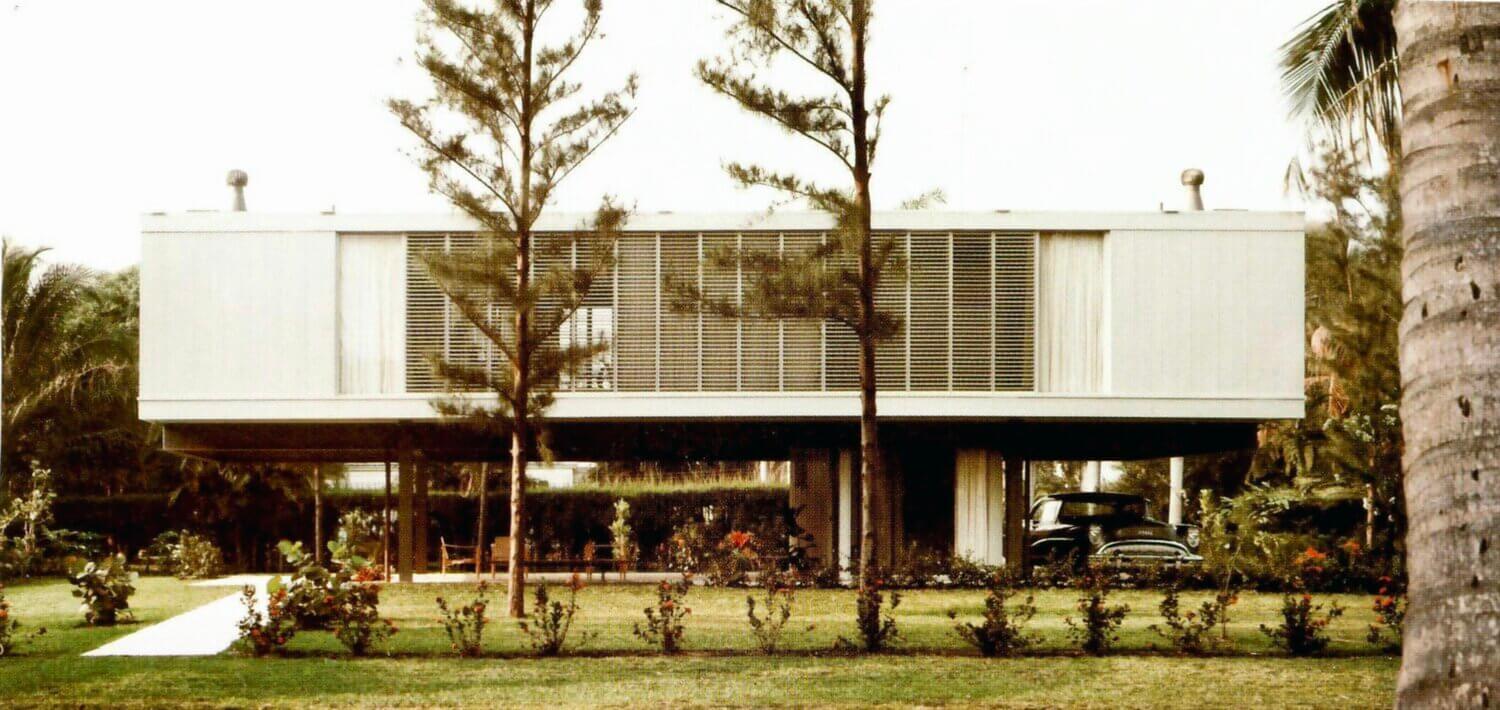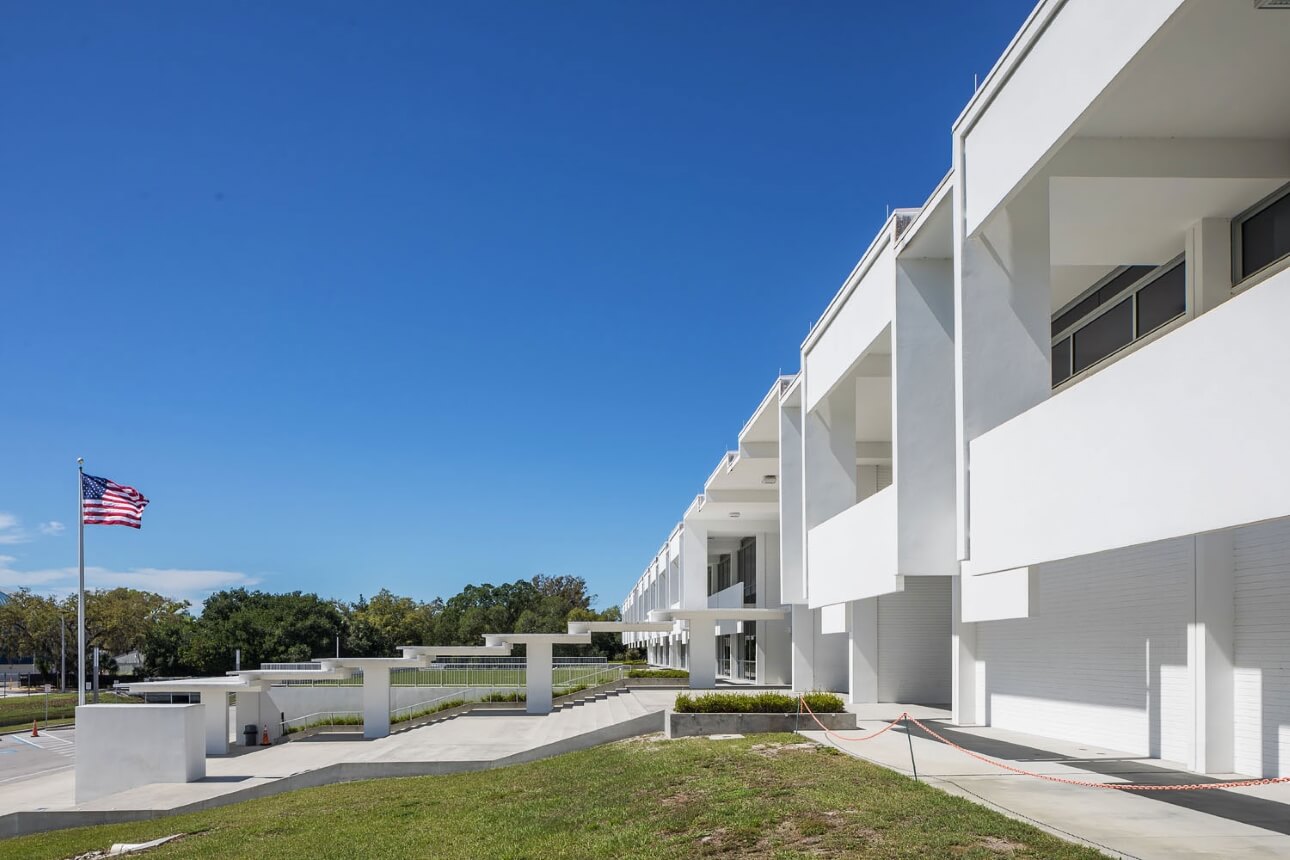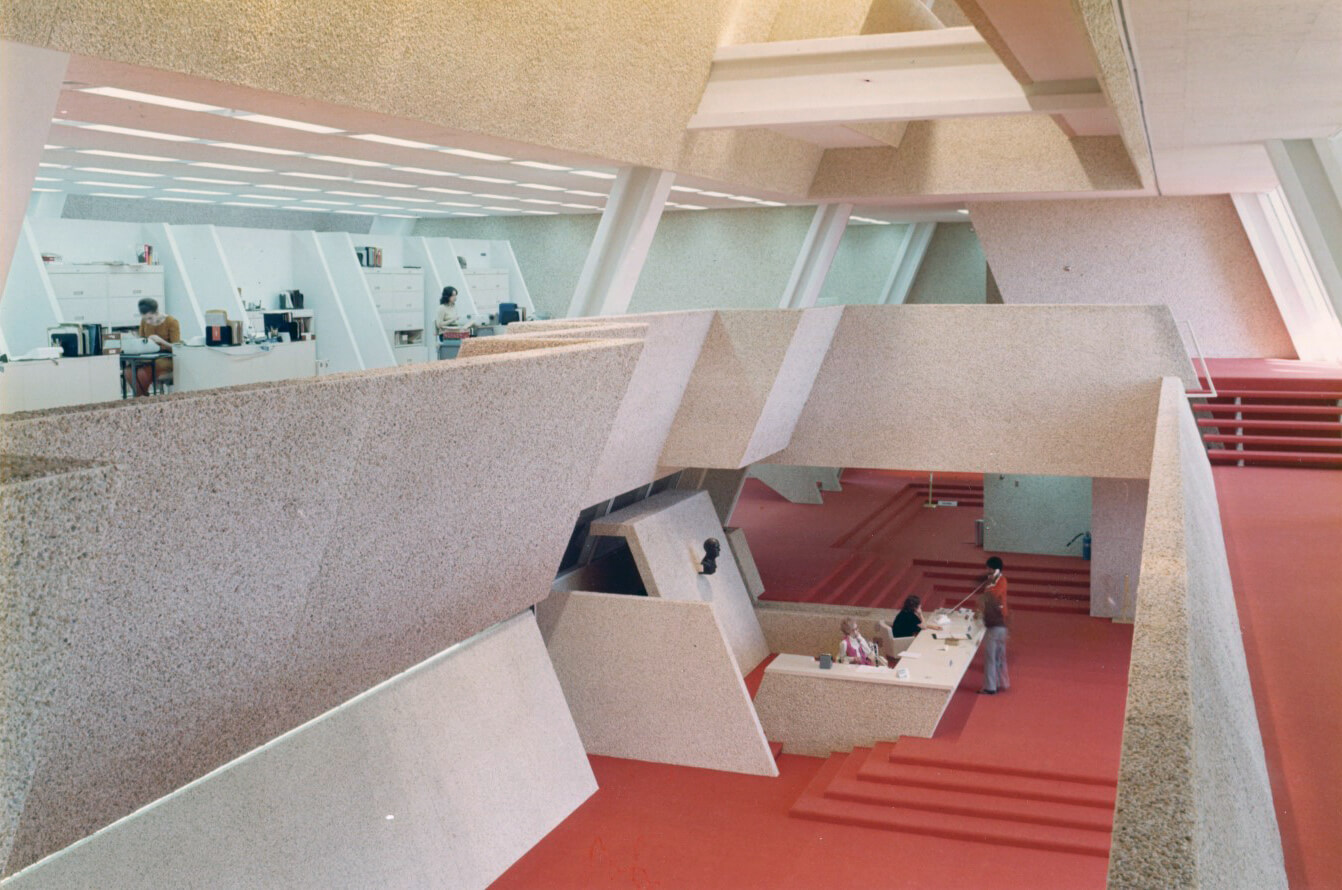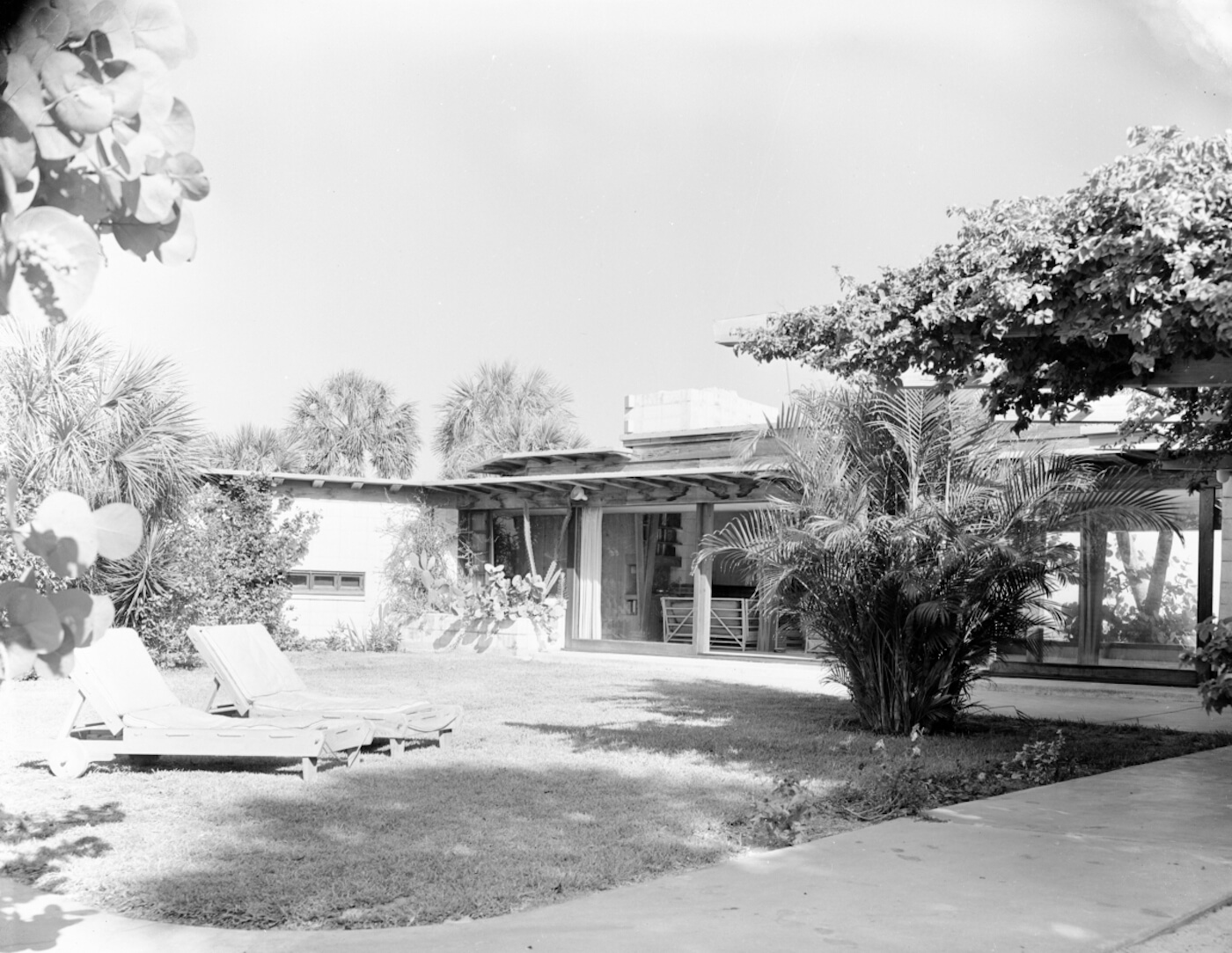Below is the final of three articles written as part of the New Voices in Architectural Journalism fellowship, a mentorship-based program developed by The Architect’s Newspaper and the Pratt Institute School of Architecture. All three articles have been published in the June 2022 issue of AN; a second round of pieces written by the inaugural New Voices cohort—Ekam Singh, Catherine Chattergoon, and Monty Rush—will be published in the July/August issue of AN. You can learn more about New Voices in AN editor-in-chief Aaron Seward’s introductory note.
To be a preservationist is hard. To be a preservationist for Paul Rudolph’s buildings is even harder. Rudolph is often cast as the unluckiest architect of his generation, given how many of his buildings have met with the wrecking ball. The anti-Rudolph mood started while the architect was still alive, but it intensified after his death in 1997. The razings of the Burroughs Wellcome building in Triangle Park, North Carolina, and the Biggs Residence in Delray Beach, Florida, both in 2020, have put already anxious campaigners on high alert as to the fate of the Boston Government Service Center and other beleaguered projects.
Born to a Kentucky reverend in 1918, Rudolph studied architecture at Auburn University (then known as Alabama Polytechnic Institute) and, after a spell in the Navy building ships, obtained a master’s from Harvard. Rudolph moved to Sarasota, Florida, and wasted little time in setting up his own office in 1952, designing modern, single-family homes that defined a new way of living. He produced buildings consistently through the 1990s, at which point he was recognized as one of the country’s most important architects. The numerous projects he designed (more than 150 were realized, with around the same number unbuilt) were celebrated for their formal ingenuity and bold use of concrete, Rudolph’s preferred material.
Given his reputation, why, then, are Rudolph’s buildings so vulnerable to demolition?

There are a number of intersecting forces at play, from fluctuations in the economy to public tastes, that can lead to an older building being demolished. In Rudolph’s case, an aversion to the associations tying Brutalism (the style often ascribed to his work) to urban renewal and ideas of government overreach, explains the tenor of the backlash. But more specifically, the lack of funding for the continued maintenance of Rudolph’s buildings, which were often very large and required dedicated upkeep, has been a pivotal factor in demolition.
Timothy M. Rohan, a leading Rudolph scholar based at the University of Massachusetts Amherst, said that proponents of both preservation and sustainability would do well to foreground maintenance in their campaigns. Creating and adhering to maintenance programs enables the interception of issues that might imperil a building’s performance before they snowball out of control. “It’s possible to preserve anything. You just have to have the will to do so,” Rohan said. He suggested that incorporating maintenance into sustainable practices might be a way to overcome the fact that many Rudolph projects stand on plots that skyrocketed in value in the years after their construction. Unless a convincing case for landmarking and rehabilitation or adaptive reuse is made, land values will always win out.
The Twitchell Residence, built in the 1940s in Siesta Key, Florida, was demolished in 2007 after falling into disrepair. Like other Rudolph-designed homes of that time, the house promoted passive cooling in a wet, hot climate decades before such ideas were popular. But updated fire and residential building code requirements pushed the owners to sell the property, which sat on an attractive, expensive lot. Preservation arguments are even less likely to sway individual owners who may not want to be saddled with the responsibilities that come with caring for a significant piece of architecture.

Landmarking is useful but is not a sure way to preserve Rudolph’s extant residences. In August 2020, the owners of the Biggs Residence all but tore down the house, retaining only the metal framing. They did so without alerting the city, which would have asked to review the demolition plan, as the property is listed on the Delray Beach Local Register of Historic Places.
Riverview High School, constructed in 1958 in Sarasota, was demolished in 2009. The original design considerations of brise-soleils and breezeways tailored to the subtropical climate did not contend well with the introduction of air-conditioning following a building renovation. Sealing the building caused mold issues that could not be resolved without additional costly renovations. Despite pushback from historians, architects, and local residents, the county school board didn’t revoke the demolition order.
Still, that passion for architecture from communities and preservationists is exactly what can save endangered buildings. Rudolph’s addition to Sarasota High School, completed in 1960 in a similar style to Riverview, was rehabilitated in 2015. In addition to reinforcing the structure and removing the asbestos stucco on the exterior, Harvard Jolly Architecture and local architect Jonathan Parks preserved the original breezeways. According to Rohan, the renovation would not have happened without the efforts of the Historic Preservation Program in Sarasota, which helped the school board recognize the importance of Rudolph’s architecture and doubled down after the loss of Riverview. “The value of the buildings is tied to the sense of place and identity, and the value extends beyond the immediate financial gains of the building,” he said.

The cachet of midcentury modern design has certainly elevated Rudolph’s early work over his mid- and late-career work, which is often inaccurately labeled Brutalist. (The buildings from the 1970s on mark a return to steel and glass, albeit married to large massings.) Both criticized and applauded as a “difficult” style of architecture to digest, Brutalism, with its affinity for unadorned concrete, implacable forms, and expressive structural systems, draws mixed emotions from the communities that live and work inside these projects. Rudolph’s municipal buildings are under even more public pressure than his other residential projects due to their high visibility and contextual ties to government entities. Rohan said that these buildings are often used as “financial and political footballs,” particularly when administrations turn over.
After a 2011 flood, the Orange County Government Center in Goshen, New York, was slated to be restored. But the project was botched and resulted in the stripping of the building’s multilevel interiors and the partial smoothing over of the exteriors to match a new adjoining structure. More recently in Boston, the Rudolph-designed Government Service Center is at risk of a similar disfigurement, if not outright demolition. In a bid to redevelop parts of the site, Massachusetts’s Division of Capital Asset Management and Maintenance has signaled that it is willing to pull down the Charles F. Hurley Building, a key piece of the multiblock project. Writing for AN, local architect Chris Grimley defended the “radical vision” of Rudolph’s broader scheme, which was only partially realized. That the complex is tied to the failure of the American welfare state is unfortunate, but that, he argued, is reason enough for its preservation. “Such an outlook,” Grimley wrote, “celebrates all elements of urban history, including those we don’t particularly find beautiful, for as history suggests, standards of beauty are not fixed in place but oscillate over time.”

Architecture critic Kate Wagner laments the conversations that these real or pending demolitions often spark. Echoing Rohan, she finds that little effort is made to understand the richness of Rudolph’s architecture; instead, more energy is poured into painting projects such as the Burroughs Wellcome building or the Government Service Center with a broad political brush. “These buildings fall prey to polemical arguments that modernism was a failure or that they were too ambitious for their time,” she said. “It’s just easier to say that they fall prey to time. Any single building can fail. We have to take care of what we put on this earth.”
Encompassing ingenious little Florida houses and schools and unforgettable civic citadels, Rudolph’s work still captures the imagination of many. Advocacy groups such as Docomomo have made inroads in spreading the cultural values of modern architecture more generally, while The Paul Rudolph Foundation and The Paul Rudolph Institute for Modern Architecture actively work to safeguard the architect’s legacy. Through these efforts, and the thoughtful work of designers and clients, many are fostering a culture of care toward what has already been built, including Paul Rudolph’s architecture.
Monty Rush is a BArch student at the Pratt Institute School of Architecture. In 2021–22, she was one of three New Voices in Architectural Journalism fellows. The program was sponsored by Pratt and AN.











